Basic Sourdough Starter Guide
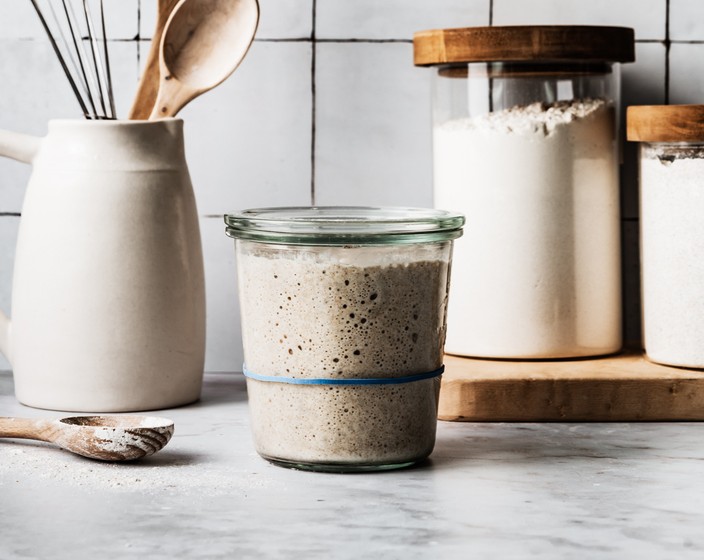
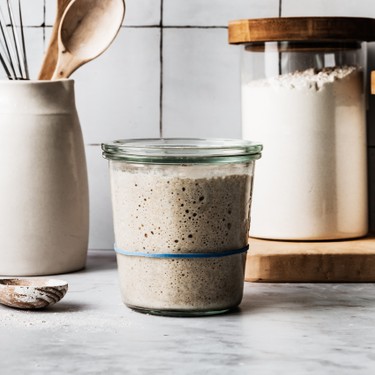


Harvesting the power of wild yeast to create rustic, light and delicious sourdough baked goods is a deeply rewarding experience. Building a sourdough starter from scratch does not have to be an intimidating process. Rather, in this basic sourdough starter guide, I will show you that all you need is 5 minutes a day for 7 days and you can create a robust, lively sourdough starter!
Contrary to popular belief that the yeast in sourdough comes from the air, the primary initial source of sourdough microflora is actually from the flour. Yeast and bacteria live on the outside of the grain (just like the yeast to make wine lives on the skin of the grapes). Whole-grain rye flour is so great for sourdough because it has a high level of enzymes that attract a variety of yeasts. I have built & maintained sourdough starters with & without rye flour and there is no contest, rye flour is by far, the best performing flour for building and maintaining your sourdough starter.
If you are unable to procure whole grain rye flour there are other whole grain flours that are good stand-ins, like whole wheat flour or whole spelt flour for example. If worse comes to worst, you can start a sourdough starter with unbleached bread flour or unbleached all-purpose flour, typically it will just take a bit longer to get active.
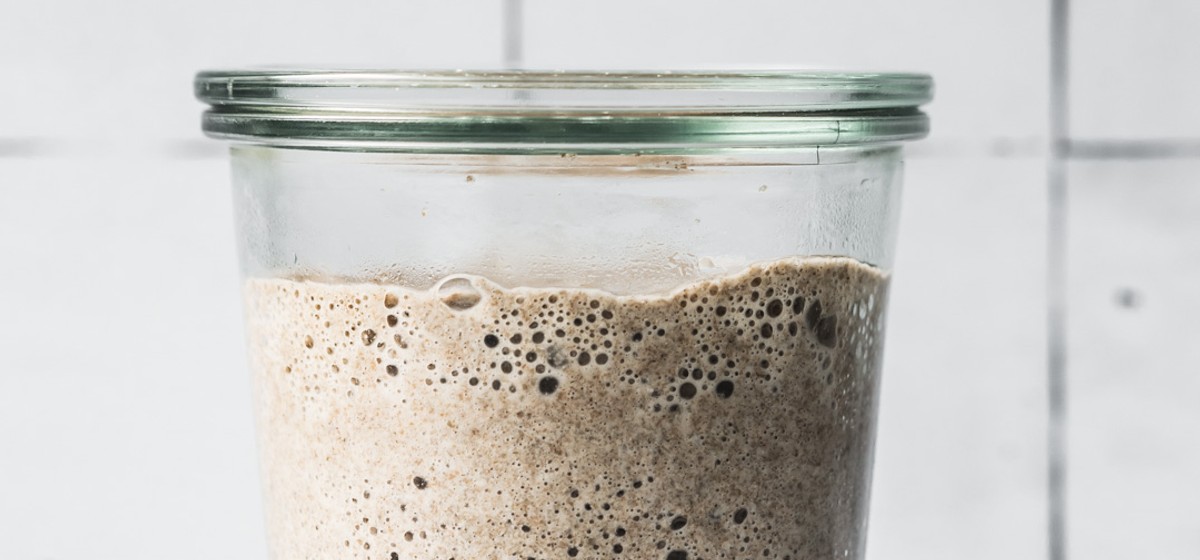
FLOUR SELECTION:
WATER MATTERS:
Make sure to only use filtered water for your sourdough starter & loaves. Your sourdough starter and the naturally leavened loaves you make with it contain wild yeast and lactobacillus bacteria which work much more slowly than commercial yeast. Any chemical compounds that are present in tap water can produce undesirable reactions in your starter & dough, so using only filtered water is the best for sourdough.
The one ingredient that I did not list in the above headline is TEMPERATURE. The ambient, warm environment that you ferment your sourdough starter in MATTERS! There are several ways to create a warm environment for your starter (78° – 82°F is ideal).
In addition, you want your water to be warm (85° F) for building your starter as this will help contribute to the ambient temperature of your starter.
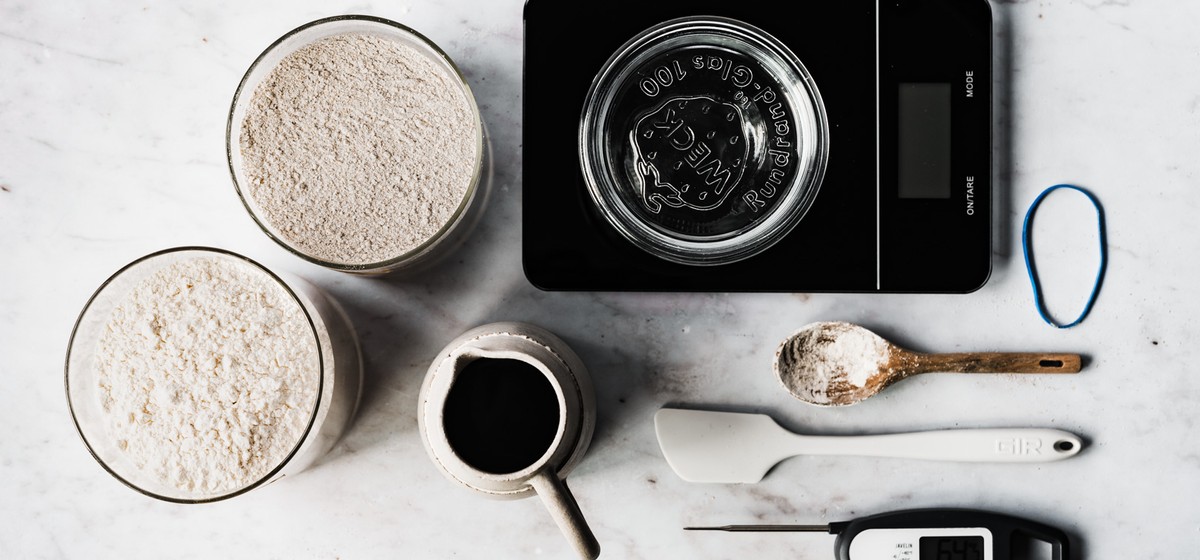
I recommend beginning DAY 1 of the sourdough starter process in the evening (ideally by 10pm). This basic sourdough starter guide follows a 24-hour cycle between feedings. When you feed your sourdough starter each night, you will be preparing it to eventually be ready to make bread with it on the morning of the 8th day.
Starting with 100% rye flour is the best way to introduce lots of wild yeast into your starter! You should notice a fair amount of bubbles in your starter after it’s 24-hour rest.
For this feeding, we are going to introduce a little bit of all-purpose flour and we will use less water because we reserve 70g of our day-old starter.
Today’s feeding is the same as DAY 2, you may start noticing bubbles on top of your starter as well as a nice sourdough smell.
We are going to reduce the amount of rye flour once again, and will feed 50g rye & 50g all-purpose flours. Your starter may look like it is not growing much, but stick with the schedule and by tomorrow it should double in size at its peak activity.
Today we repeat the same schedule as DAY 4. Your starter should be showing more signs of activity and should have doubled (or grown even more than doubled) at its peak activity.
This is the first time we will step down from 70g of mature starter down to 50g of mature starter. Your starter should be just as active as it was with 70g of starter at its peak activity, this is a sign that our starter is almost done!
Now we step down from 50g of mature starter down to only 25g. After this feeding, your starter should have almost tripled in size overnight and it will be ready to bake your first loaves of bread!
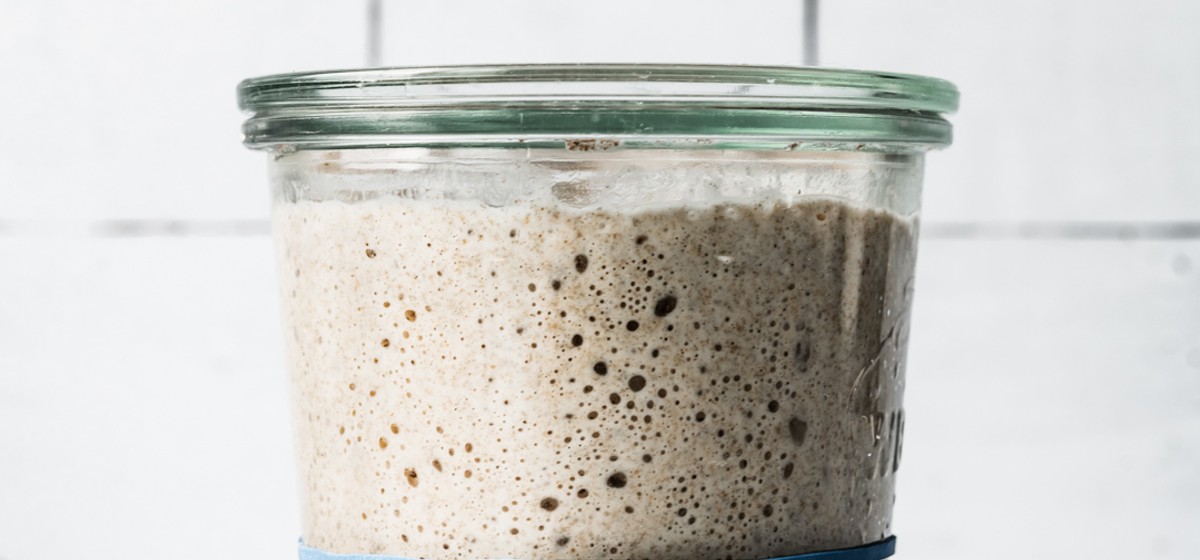
You’re ready to make bread and start maintaining your starter!
Once your sourdough starter is nice and active, there is no need to continue daily feedings. Instead, you will store your starter in the refrigerator once it has reached peak activity. Keeping your sourdough starter in the refrigerator retards the fermentation process. When your sourdough starter is newer, I recommend pulling it from the refrigerator once a week to refresh it, typically you would do this the night before you are ready to make your sourdough baked goods.
This is the feeding ratio that I use to maintain a smaller amount of starter which eliminates discard/waste:
25g mature starter
25g stoneground rye flour
25g unbleached all-purpose flour
50g warm filtered water (85°F)
I typically feed my sourdough starter every 7-10 days but have left my starter in the refrigerator for several weeks without feeding and my starter bounced right back when I finally fed it!
One commonly overlooked element in building a sourdough starter is choosing a name for your sourdough starter! Now you may be thinking to yourself: how could this possibly matter? But let me tell you, naming your sourdough starter is not only fun (there are a lot of clever sourdough names out there!) but it gives you a personal connection and intimacy with your starter that makes the whole process much more enjoyable, and in my opinion, more successful.
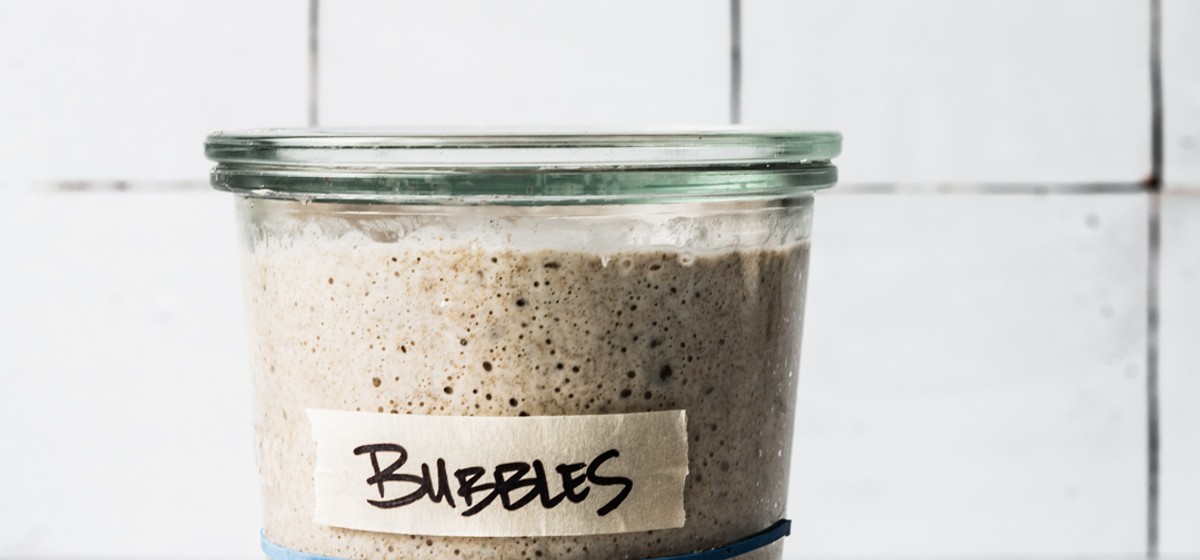
You’re ready to make bread and start maintaining your starter! For your first sourdough bread making endeavor, I recommend starting with my BASIC SOURDOUGH BREAD GUIDE! In my comprehensive sourdough bread guide, I teach you all of the necessary techniques (yes, there are videos!) that will empower you to make your sourdough bread dreams come true!